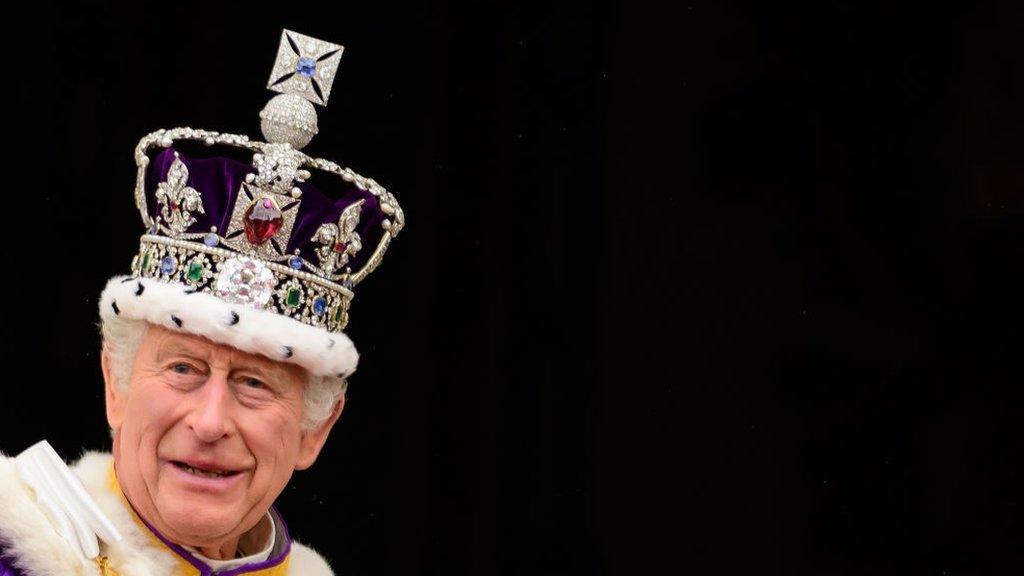Stamps featuring King Charles go on sale but prices increase
- Published
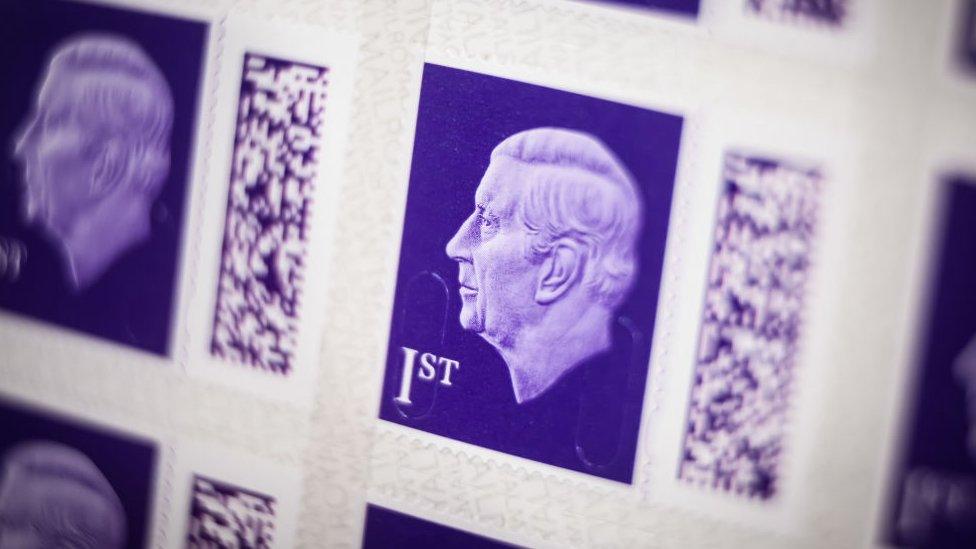
King Charles' portrait will appear on all standard Royal Mail stamps from now, but stock of those featuring the late Queen will be sold first.
The change in the monarch's portrait comes the day after the prices of first and second class stamps went up.
On Monday, the cost of a first class stamp went up by 15p to £1.10, while second class stamps rose by 7p to 75p.
Presentation packs of the new design featuring the King's head, which is without a crown, are now on sale.
The portrait, personally approved by the King, will be used on all definitive stamps, which are the regular, plain, non-commemorative postage stamps. His silhouette has already appeared on a special set showing popular garden flowers.
However, the new everyday stamps are unlikely to be seen in regular use for some time yet.
"Post Offices and retailers will continue to sell their existing stocks of stamps featuring Her Late Majesty Queen Elizabeth and will then be supplied with the new stamps when existing stocks at Royal Mail have been exhausted," a Royal Mail spokeswoman said.
"This will minimise the environmental and financial impact of the change of monarch [on the design]."
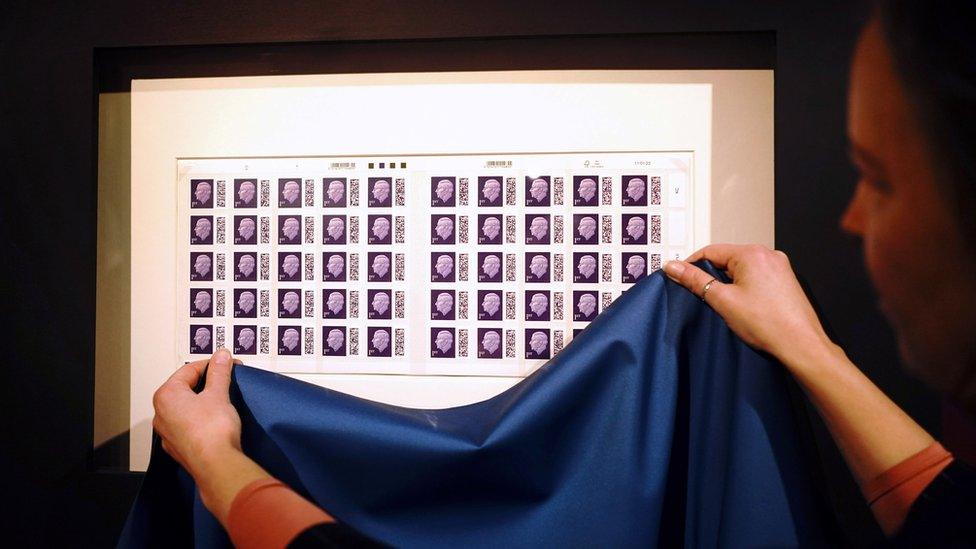
The new stamps being unveiled at the Postal Museum in London in February
Royal Mail is selling sets of the new stamps on its website.
The new design was influenced by the classic profile of Queen Elizabeth created by the artist Arnold Machin in 1967. The King's portrait does not have any crown or royal symbols - unlike many of the predecessors, where kings' stamps often include an image of a crown and queens are depicted wearing a crown or diadem.
The design is based on a sculpture made by artist Martin Jennings for the new King Charles coins - with the image then digitally adapted for stamps. Fifty pence coins carrying the image are already in circulation.
King Charles becomes the seventh monarch to appear on stamps - Queen Victoria was the first, in 1840, when her profile was shown on a "Penny Black".
The price rise of stamps took effect as a string of household bills become more expensive.
- Published8 February 2023
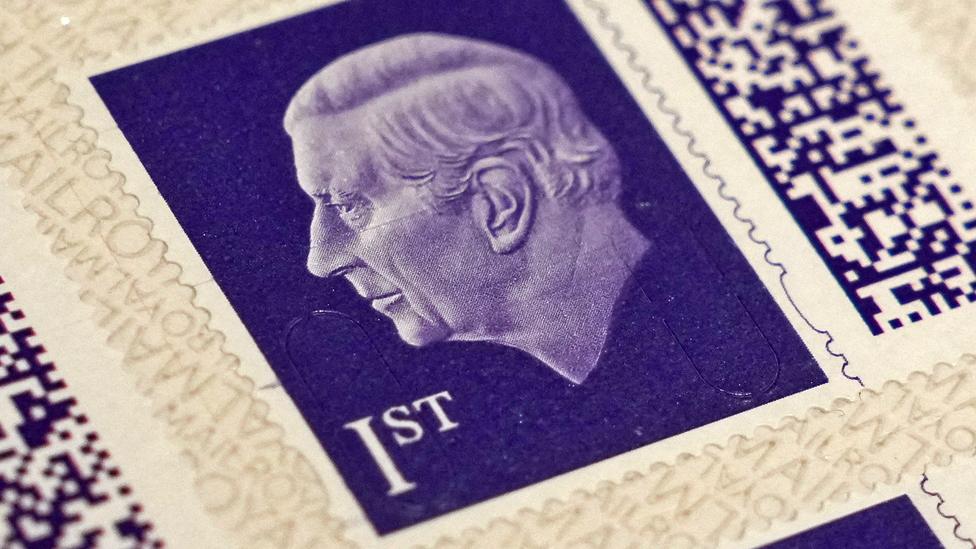
- Published14 March 2023
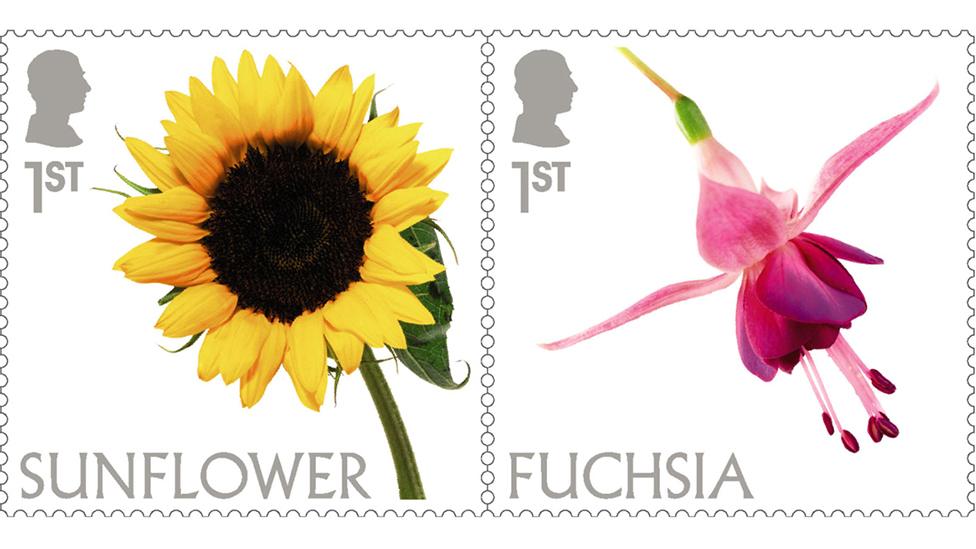
- Published3 March 2023
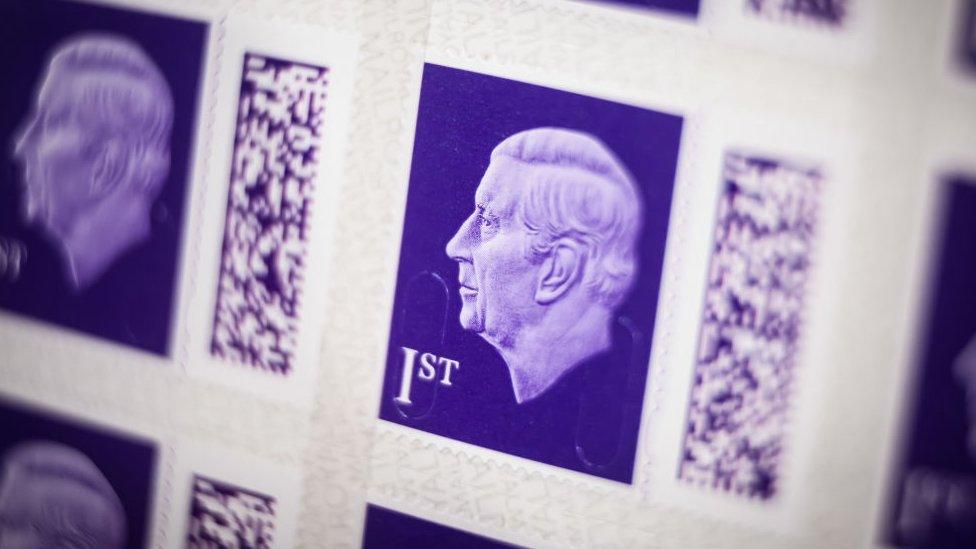
- Published1 April 2023

- Published2 May 2023

